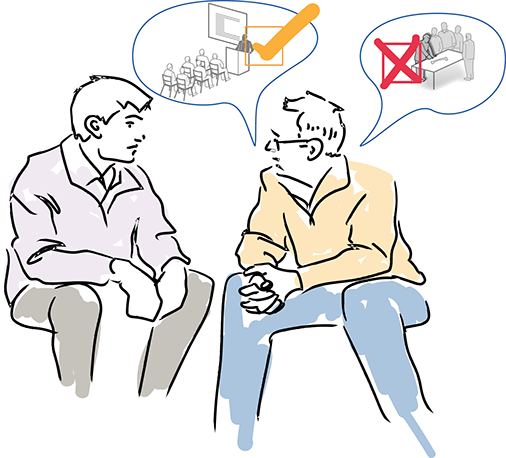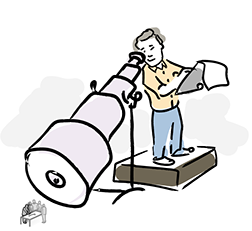Giving and receiving feedback is an important element of all Faculty Development Programs organized by the AO Foundation. These days, many AO courses have a Coach on board who offers feedback to faculty members wishing to improve their teaching skills. When providing feedback, the Coaches follow four steps defined in the "Pendelton" model. However, even with the help of these steps, giving constructive feedback is far from easy. We, therefore, have gathered 10 tips that will help you become a successful Coach.

10 tips for
impactful coaching
 1
1
Detailed observation
Closely monitoring the teaching event is the key to a successful coaching session, which should be objective and based on defined criteria. Always use one of the AO coaching checklists to aid your observation. These are available for providing feedback for lecturers, practical directors, small group discussion facilitators, and table instructors. You should not try to fill in all the sections at once especially when you are first starting. Focus on what seems important to you.
 2
2
Create the atmosphere
Ensure that coaching takes place in the proper environment. Privacy and comfort are essential, and coffee or tea can be helpful. Try to avoid the impression of hiding away in a “locked room” but make sure your discussions cannot be heard by other course participants.
 3
3
Introduce yourself and the process
Unless the coachee is very experienced, begin your coaching session by introducing yourself and describing the process that will follow. Stress the confidential nature of the session and walk the coachee through the Pendleton process. Explaining the process will lower the coachee's stress levels, as they are usually apprehensive at the start of the session.
 4
4
Focus on things that went well
Stick to the Pendleton technique. Always begin with questions such as, “What do you think went well?” or “What were the good points of the session?” Coachees usually focus on the negative. Unless you start off in a positive direction, the coachee will not realize what went well. Getting the discussion started along these positive lines is often the most difficult part of the coaching process but you should persist on finding out the positive aspects and not rush on to the problems.
 5
5
Encourage solution seeking
Remember that the question is, “What would you do differently next time?” not, “What went badly?” It is important that the coachee can recognize the problem and come up with a solution. If the coachee simply states what went badly, encourage them to take things further by asking, “How would you prevent this from happening again?”
 6
6
Offer your solutions deliberately
If you can think of a solution when the coachee cannot, you should introduce it at the end of the session. Beginning with, “I have seen this work” is preferable to saying, “Do this”. Be aware of pushback, which is often given away by a change in body language. If the coachee is resistant to your ideas step back and focus on the points you can agree on.
 7
7
Fewer changes induce more change
At the end of the session, you should come up with ideas on modifications that the coachee can use next time to achieve meaningful change in their teaching. If there are many points it is best to focus on three or less key changes. As in lecturing, less is more and change is much more likely to occur if you focus on key areas of improvement.
 8
8
Changes must be achievable
Changing font sizes, omitting an offensive image, looking at the audience, and rehearsing are changes that can be achieved if the coachee is willing to. Learning perfect English in the next three months, however, is not an achievable goal.
 9
9
Summarize the key points
As in all teaching events, always end your discussion with a conclusion and summary of key points that the coachee has agreed to change. This conclusion is your opportunity to reinforce the key learning points of the session reinforcing the positive aspects discussed in the beginning.
 10
10
Reinforce commitment to change
If you have agreed on some points to change next time, ask the coachee to write them down by the end of the session. They should also add the date and their signature. This signed list and the observation sheet you prepared are for the coachee to take. Writing down the points for improvement makes it much more likely for the change to happen.
AOTrauma
www.aotrauma.com | education@aotrauma.org
Copyright © 2015 AO Foundation. All rights reserved.
